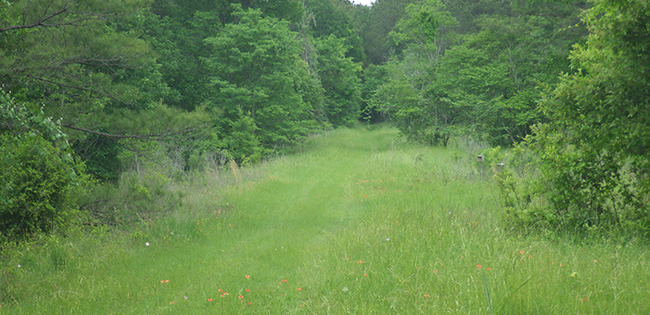Research Spotlight
Biodiversity of native bees and plant-pollinator interactions at the SHSU field station
John B. Pascarella
Dean, College of Science & Engineering Technology and Professor, Department of Biological Sciences
The native apifauna (Hymenoptera, Apoidea) and its interactions with plants is being studied at the SHSU field station (CBFS) and other areas within Texas, including Christmas Mountain in Brewster county, Bamberger Ranch in Blanco County, and a new state natural area in Bandera/Kendall County. At SHSU CBFS, native bees are being sampled using three techniques: pan trapping, blue vane trapping, and sweep netting. In addition to these active sampling techniques, the SHSU natural history collection was examined for native bees that had been previously collected. The goal of this project is to produce a checklist of species found at the field station, their time of flight, and associated plants that they visit.
Results from Fall 2014 work done by Juan Ledezma, undergraduate biology student at SHSU
Bee biodiversity was sampled seven times using two sampling methods, pan traps and sweep netting, at the SHSU Center for Biological Field Studies in Walker County, Texas (September 2, 2014 - November 24, 2014). Six different habitats were sampled. Sweep netting was done for 30 person minutes per habitat per sampling date (~ every two weeks). A standardized pan trap protocol using 5 yellow, 5 blue, and 5 white solo cups with soapy water solution were placed on the ground every 5 meters (alternating colors) for 24 hours in each habitat. Pan trap species diversity ranged from 1-10 per habitat (mean = 4.7) with 2-20 specimens caught per habitat per date (mean = 8.3). Sweep netting species diversity ranged from 0-8 per habitat (mean = 1.6) with 0-17 specimens (mean = 3.0). Pan trapping had higher diversity and specimen capture compared to sweep netting (P < 0.0001, DF = 41). While there were no statistically significant differences in either species or specimens across habitats in sweep netting, habitats sampled by pan traps did differ in both species diversity and specimens caught (P< 0.05 and P < 0.01, respectively), after controlling for date of sampling. In both cases, an anthropomorphic lawn habitat had higher diversity and abundance than other natural sites and a dense deciduous forest woodland had the lowest diversity and abundance. Fifty bee species from 498 specimens (452 females, 46 males) were recorded from this site, with 21 Halictid, 14 Apid, 9 Megachilid, 4 Andrenid, and 2 Colletid species. 43 species were recorded from pan traps, 31 from sweep nets, and 22 from both techniques. Nine species were sampled only using sweep nets and 21 only from pan traps. 92% of all Lasioglossum specimens were found using pan traps. Both techniques are recommended for estimating species diversity.





